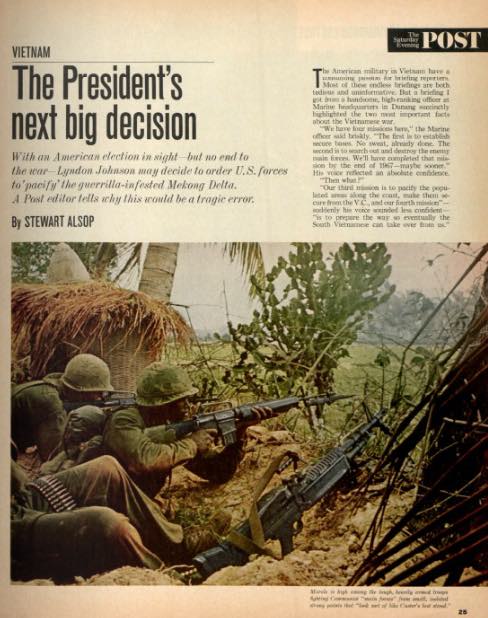A Troubling View from Vietnam: 50 Years Ago
 In the years since the Vietnam war, the U.S. has repeatedly sent its military into conflicts around the world. But the human and economic toll of these other conflicts is minor when compared with Vietnam.
In the years since the Vietnam war, the U.S. has repeatedly sent its military into conflicts around the world. But the human and economic toll of these other conflicts is minor when compared with Vietnam.
That war, which was still ramping up 50 years ago, brought about several changes in American thinking. The failure of the Vietnam mission forced the administration to reconsider how it would oppose communism. The endless, seemingly pointless deaths of recruits gave many draft-age Americans a hostile attitude toward their government and authority in general. This attitude, in turn, produced a rift between American youth and its elders. The older generation, which had brought victory to the U.S. in World War II, couldn’t recognize how much had changed in 25 years.
It was the members of that generation who were developing the strategy for the Vietnam War. They believed in the invincibility of our military and the inevitability of American victory. Their faith led them to keep pouring men and money into the fight that achieved little or no progress. By 1967, 8,694 Americans had died in the war, and it hadn’t even reached its hardest years. Before the U.S. withdrew from the country, another 38,000 Americans would be lost.
Not all military personnel were blind to the actual course of the war. You can hear some of their voices in the article “The President’s Next Big Decision,” from the March 25, 1967, issue of the Post. Reporter Stewart Alsop visited a vulnerable, isolated unit near the Demilitarized Zone with guns pointing in all directions. The Marine battalion commander who led him around commented, “Looks kind of like Custer’s last stand, doesn’t it?”
The article shows that some reporters and soldiers already saw that Vietnam wasn’t going to be the short, decisive, or victorious war that Washington expected.

Featured image: From “The President’s Next Big Decision” from the March 25, 1967, issue of the Post. Photo by Michel Renard